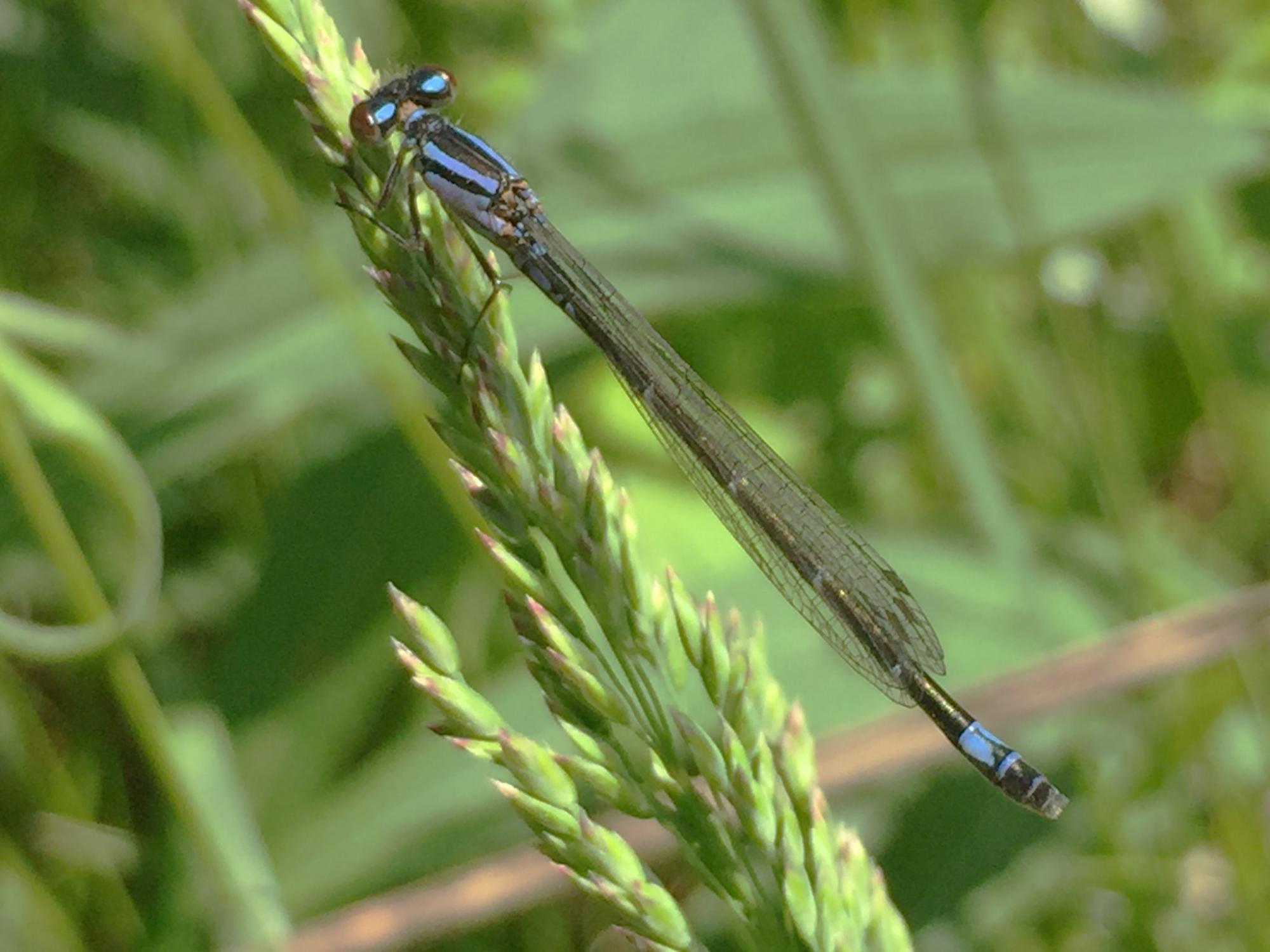AZURE Bluet & SKIMMING BLUET
Male Skimming Bluet, photographed at Spring Lakes Park in Bellbrook. Notice that this Skimming Bluet has only two blue segments near the tip of his abdomen (as opposed to three in an Azure Bluet). I see most of my Skimming Bluets in May and June. However, they can linger in smaller numbers throughout the summer and even into October with warm weather. (My personal late sighting is October 22, 2017.)
Female Azure Bluet. Notice that the spots between the eyes are pale green rather than blue, and the last blue spot on the abdomen is divided by a thin black line.
Male Azure Bluet. Notice that there are three blue segments at the tip of the abdomen (as opposed to two blue segments in the similar Skimming Bluet).
Mated pair of Azure Bluets, photographed at Cox Arboretum.
Another male Azure Bluet. This species is common from May through September, and stragglers can persist into October. (My personal early and late sightings are April 29th and October 13th).
Another female Azure Bluet. This species is common at Cox Arboretum, Grant Park in Centerville, and the Caesar Creek Wildlife Area. They live in shallow, fishless wetlands.
Female Skimming Bluet, photographed at Fairborn Marsh. Notice that the blue square near the end of her abdomen is partially (but not completely) divided by a thin black wedge.
A young female Azure Bluet from a different angle.
Skimming Bluet, photographed at Oakes Quarry. Skimming Bluets are found at ponds, lakes, and wetlands. They tolerate the presence of fish better than many damselflies.
